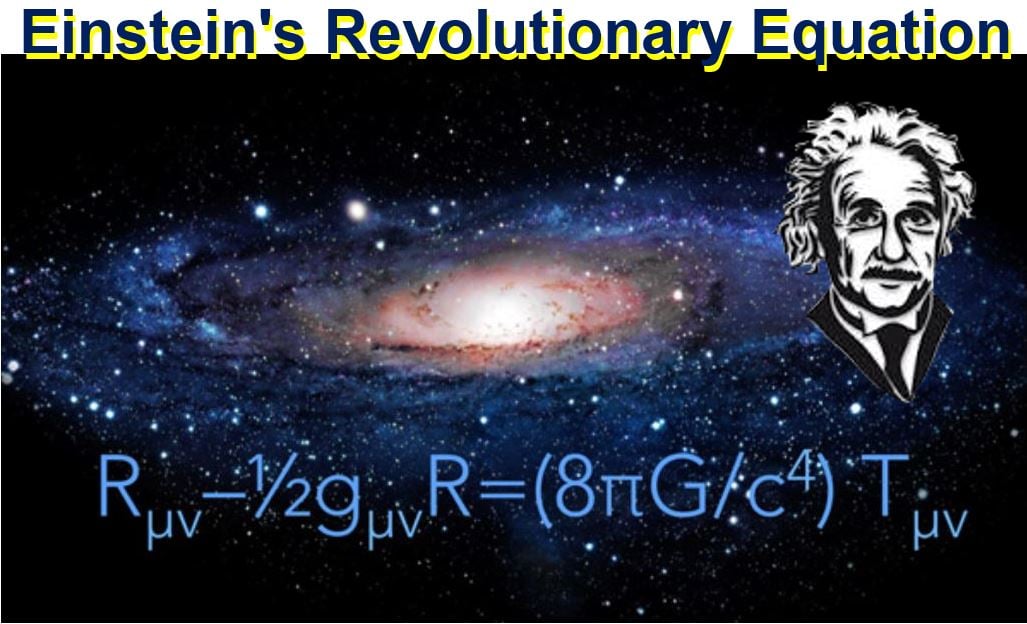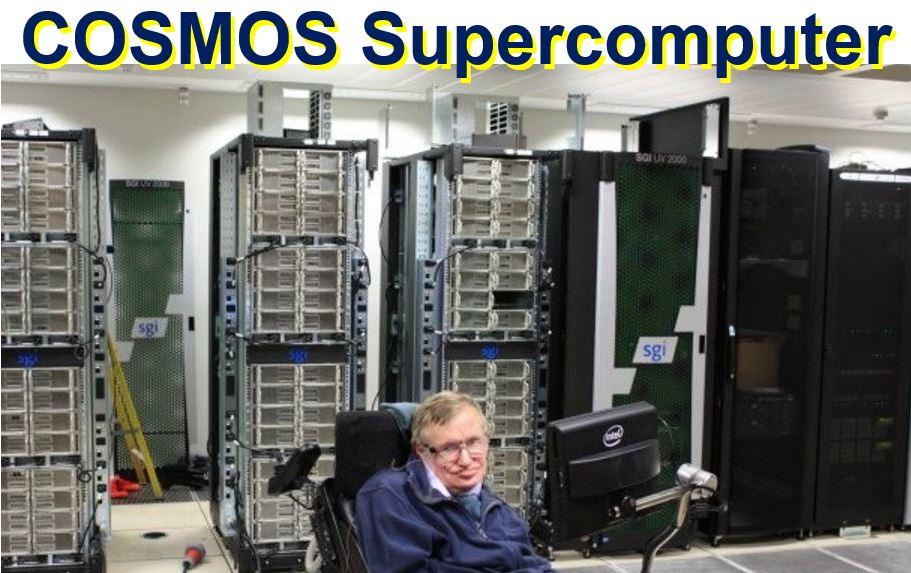A 5D black hole would break down general relativity and we would need a new theory to explain everything about the Universe, assuming of course, that our Universe contains five dimensions, says a team of researchers from the University of Cambridge and Queen Mary University of London, who have carried out a simulation on a supercomputer.
The theoretical physicists explained in the peer-reviewed journal Physical Review Letters (citation below) that they have successfully simulated how a ring-shaped black hole would cause general relativity to break down.
In their simulation, Einstein’s general theory of relativity – upon which modern physics is founded – could be broken down by a strangely-shaped black hole. They emphasized that for this weird black hole to exist, our Universe would need to have at least five dimensions.
How many dimensions are there?
While scientists believe the Universe has several dimensions, nobody is sure how many there really are.
The researchers have successfully simulated a black hole shaped like a thin ring, which gives rise to a series of ‘bulges’ connected by strings that over time get thinner.
Eventually, these strings get so thin that they pinch off into a series or ultra-tiny black holes, a bit like how a thin stream of water comes out of a tap and breaks up into droplets.
We have known about ring-shaped black holes since 2002, when they were ‘discovered’. However, this is the first time their dynamics have been successfully simulated using extremely powerful computers (supercomputers).
 (a) Apparent horizon of a ν=0.4 ring in the highly dynamical stages of the evolution. (b) Apparent horizon of the ν=0.2 ring just before the collapse into a spherical black hole. (c) χ=0.2 contour for a ν=0.15 ring during the evolution. (Image: Physical Review Letters)
(a) Apparent horizon of a ν=0.4 ring in the highly dynamical stages of the evolution. (b) Apparent horizon of the ν=0.2 ring just before the collapse into a spherical black hole. (c) χ=0.2 contour for a ν=0.15 ring during the evolution. (Image: Physical Review Letters)
Naked singularity causes Einstein’s equations to break down
If this type of black hole formed, a ‘naked singularity’ would appear, which would cause Einstein’s equations behind general relativity to break down.
General relativity supports our current understanding of gravity – everything from how old the stars in our Universe are, to GPS signals we use for navigation, is based on these equations.
In part, the theory of general relativity tells us that matter distorts the spacetime around it, and what we know as gravity is the effect of that warp.
For the past one hundred years, since Einstein published his theories, general relativity has passed every single test we have thrown at it. However, one of its limitations is the existence of singularities.
A singularity is where gravity is so powerful that space, time, and the laws of physics break down.
Einstein predicted that singularities exist at the centre of black holes, surrounded by an even horizon. The event horizon is the ‘point of no return’ – if you cross that point you’ve had it, the gravitational pull is too strong for anything to get away, not even light. This means it cannot be observed from the outside.
Co-author Markus Kunesch, a doctoral student at Cambridge’s Department of Applied Mathematics and Theoretical Physics (DAMTP), said:
“As long as singularities stay hidden behind an event horizon, they do not cause trouble and general relativity holds – the ‘cosmic censorship conjecture’ says that this is always the case. As long as the cosmic censorship conjecture is valid, we can safely predict the future outside of black holes.”
“Because ultimately, what we’re trying to do in physics is to predict the future given knowledge about the state of the universe now.”
 Einstein’s revolutionary equation says that the curvature of space-time equals the distribution of matter plus energy. (Image: adapted from shass.mit.edu)
Einstein’s revolutionary equation says that the curvature of space-time equals the distribution of matter plus energy. (Image: adapted from shass.mit.edu)
What if a singularity existed outside?
Could a singularity exist outside a of an event horizon? If it did we would be able to see it, but it would represent an object that has collapsed into an infinite density – this state makes no scientific sense for us; it causes the laws of physics to break down.
Theoretical physicists say that such a thing, known as a ‘naked singularity’, could exist in higher dimensions.
Co-author Saran Tunyasuvunakool, also a doctoral student at DAMTP, said:
“If naked singularities exist, general relativity breaks down. And if general relativity breaks down, it would throw everything upside down, because it would no longer have any predictive power – it could no longer be considered as a standalone theory to explain the universe.”
Most people, including scientists, think of the Universe as existing in four dimensions – the three everyday dimensions plus the fourth dimension of time – which together we refer to as spacetime.
However, in some branches of theoretical physics, including string theory, the Universe consists of up to eleven dimensions.
Additional dimensions could be enormous and expansive, or they might be curled up, tiny and difficult to detect. As humans are only capable of perceiving three dimensions, the existence of extra ones can only be inferred through very high energy experiments, such as the ones that are being conducted at the Large Hadron Collider.
 The COSMOS supercomputer at the University of Cambridge, with Prof. Stephen Hawking in the foreground. The researchers used this computer, the most powerful in Europe, to carry out their simulation. (Image: bitcity.it)
The COSMOS supercomputer at the University of Cambridge, with Prof. Stephen Hawking in the foreground. The researchers used this computer, the most powerful in Europe, to carry out their simulation. (Image: bitcity.it)
Studying general relativity in higher dimensions
Einstein made no mention of how many dimensions our Universe might have in his theory, so theoretical physicists have been studying general relativity in greater dimensions to determine whether cosmic censorship still holds.
When they discovered these ring-shaped black holes in five dimensions, the scientists hypothesized that they could break up and give rise to a naked singularity.
What the Cambridge scientists, together with co-author Pau Figueras from Queen Mary University of London, have found is that if the ring is sufficiently thin, naked singularities could be formed.
They used the COSMOS supercomputer to perform a full simulation of Einstein’s complete theory in higher dimensions, which allowed them to not only confirm that these ‘black rings’ are unstable, but to also determine what eventually happens to them.
The COSMOS supercomputer at the University of Cambridge is part of the Science and Technology Facilities Council (STFC) DiRAC HPC Facility. It is the largest shared-memory computer in Europe.
In the majority of cases, a black ring collapses back into a sphere, so that the singularity remains within the event horizon. Super-thin black rings can become unstable enough to form bulges connected by thinner and thinner strings, which eventually break off and form a naked singularity.
New computer code and simulation techniques were needed to handle these extreme shapes.
Tunyasuvunakool said:
“The better we get at simulating Einstein’s theory of gravity in higher dimensions, the easier it will be for us to help with advancing new computational techniques – we’re pushing the limits of what you can do on a computer when it comes to Einstein’s theory.”
“But if cosmic censorship doesn’t hold in higher dimensions, then maybe we need to look at what’s so special about a four-dimensional universe that means it does hold.”
The cosmic censorship theory is widely expected to be true if our Universe has four dimensions, but should that be disproved, we will need an alternative way of explaining it (the Universe).
Quantum gravity offers one possibility. It approximates the general relativity equations far away from a singularity, but also provides a description of new physics close to the singularity.
Citation: “End Point of Black Ring Instabilities and the Weak Cosmic Censorship Conjecture,” Pau Figueras, Markus Kunesch, and Saran Tunyasuvunakool. Physical Review Letters 116, 071102. Published 18 February 2016. DOI: org/10.1103/PhysRevLett.116.071102.


Comments are closed.